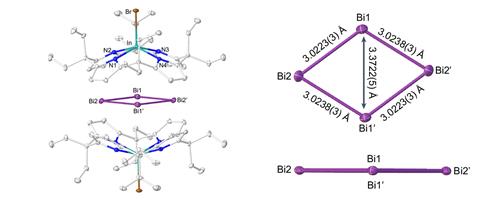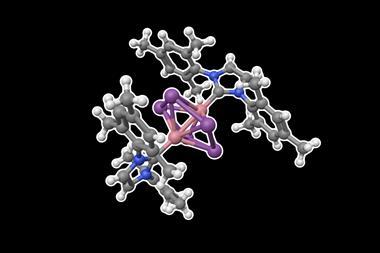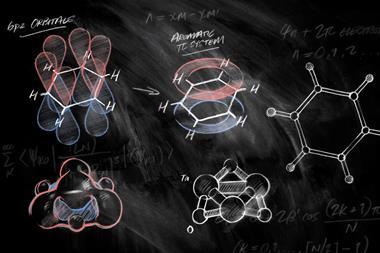A four-atom bismuth species is the first all-metal ring with aromatic bonding character to have been isolated in the lab. The structure was synthesised by researchers in Germany, who say that their findings raise important questions about the nature of aromaticity in materials composed of heavier elements.

Despite having been studied for almost 200 years, aromaticity remains one of chemistry’s most enigmatic phenomena. At school, almost every student will learn about aromatic carbon rings like benzene, but attempts to make analogous compounds entirely from metal atoms have proven much more difficult. In 2001, the aromatic all-metal species Al42˗ was detected spectroscopically, while the antiaromatic Al44˗ was detected in 2003. However, the only aromatic metal rings – including gallium, gold and thorium species – to have been isolated in the lab have needed to be stabilised by covalently bonded non-metal substituents.
Now, a team led by Florian Weigend at Philipps-University Marburg and Lutz Greb at Heidelberg University has isolated a cationic Bi44+ aromatic ring. The species takes the form of a planar rhomboid and is trapped non-covalently between two shells that each feature an indium bromide core bound within a cyclic ligand containing four pyrrole units.
The researchers note that the Bi44+ ring is isoelectronic with the antiaromatic Al44˗ species. They argue that this suggests that the charge distribution around an ionic aromatic metal ring can influence whether it will take on aromatic or antiaromatic bonding character. The team note that this finding complicates discussions of the Hückel model of aromaticity – a concept that they note is ‘valid for second-row elements but less deterministic for the heavier congeners’.
References
R Yadav et al, Nat. Chem., 2024, DOI: 10.1038/s41557-024-01530-z

















No comments yet